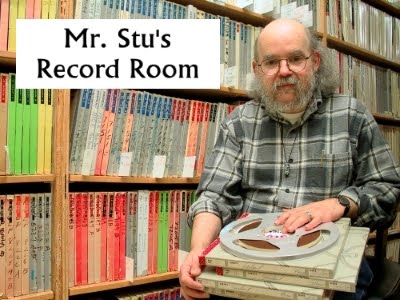By their very nature, compilations of the recordings by a particular artist on one label tell just one part of the story of that era in a musician’s life. Mosaic Records has assembled a 7-CD boxed set of The Complete Blue Note & Impulse ‘60s Studio Sessions, with eight Blue Note titles and two Impulse recordings by the incomparable trumpet master Freddie Hubbard. Only the vagaries of corporate ownership allow the Blue Note and Impulse albums to be issued together, and it points up the problems of assembling a truly comprehensive view of Hubbard’s amazing odyssey in less than five years, from the time of Open Sesame, his initial Blue Note release recorded in June 1960, to February 1965, when he made his final album for the label, Blue Spirits. During that span, Hubbard did one live session for Blue Note (The Night Of The Cookers, with Lee Morgan), and appeared as a sideman on Blue Note sessions for Tina Brooks, Hank Mobley, Kenny Drew, Dexter Gordon, and Herbie Hancock. He also participated in sessions led by Ornette Coleman (Free Jazz), John Coltrane (Africa/Brass and Olé), Oliver Nelson (The Blues And The Abstract Truth), Curtis Fuller, Randy Weston (Uhuru Africa), J.J. Johnson, Benny Golson, Wayne Shorter and many others. As of late 1961, Hubbard became a member of Art Blakey’s Jazz Messengers, recording a batch of live and studio dates for Blue Note, and with a whole new book of tunes to learn. In fact, I could go on and on with his credits in this period when he performed on an astonishing number of critically acclaimed albums. All of these sessions, plenty of opportunities to perform in clubs and concerts, and a slew of memorable compositions (including Birdlike, Arietis, Lament For Booker, Thermo and Hub-tones) point to Hubbard’s powerful work ethic in this period, his ability to shine in any and all musical situations, and the obvious esteem in which he was held by other musicians. In his typically astute and insightful essay that graces the 20-page booklet, Bob Blumenthal writes of Hubbard’s “skill at sight-reading orchestral parts...,” but even that facet of Hubbard’s tool-box can’t account for the sheer volume of material he seemed to master in no time at all. It’s been said of Coleman Hawkins that he could arrive at the studio and be shown the lead sheet for a song he’d never played. He’d look it over, step up to the microphone and play it like he had written it. I suspect the same could be said of Hubbard. The albums presented here, in stellar sound and with all the bonus tracks that have been issued on CDs over the years, are an education by themselves. We can hear how the 22-year old leader of Open Sesame, featuring tenor saxist Tina Brooks and pianist McCoy Tyner, making his own Blue Note debut, grew quickly and steadily into one of the greatest trumpeters of the modern era. An immersion in The Complete Blue Note & Impulse ‘60s Studio Sessions will all by itself provide an intense look at this period of Hubbards’ career. If all of this great music provokes you into a more detailed exploration of Hubbard’s artistry in a myriad of contexts, you’ve got many, many hours of inspiring music to look forward to. Highest recommendation!
Mosaic MD7-274; Disc 1 (72:17): (A) Open Sesame (6/19/60), (B) Goin’ Up (11/6/60)/ Disc 2 (72:16): Goin’ Up continued, ©) Hub Cap (4/9/61)/ Disc 3 (76:15): (D) Ready For Freddie (8/21/61), (E) The Artistry Of Freddie Hubbard (7/2/62)/ Disc 4 (59:02): (E) The Artistry Of Freddie Hubbard continued, (G) Here To Stay (12/27/62)/ Disc 5 (72:46): (F) Hub-Tones (7/2/62), (J) The Body And The Soul (5/2/63, small group session)/ Disc 6 (71:52): (H) The Body And The Soul (3/8/63, strings session), (I) The Body And The Soul (3/11/63, big band session), (K) Breaking Point (5/7/64)/ Disc 7 (62:02): (L) Blue Spirits (2/19/65, first session), (M) Blue Spirits (2/26/65, second session), (N) quintet session, 3/5/66, two tracks completed. All tracks recorded in Englewood Cliffs, NJ, except session (H), recorded in NYC. The Artistry Of Freddie Hubbard and The Body And The Soul originally on Impulse Records; the remainder on Blue Note Records. For complete discographical details, go here. Limited edition of 5,000 sets available directly from Mosaic at www.mosaicrecords.com




